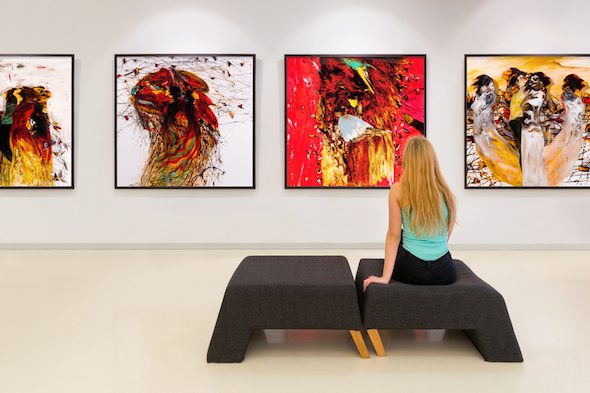If you’re only investing in a mixture of stocks, mutual funds or bonds, there are plenty of ways to add diversity to your portfolio. Fine art can be a lucrative investment but it takes a certain amount of knowledge and skill to choose pieces that are likely to increase in value over time. If you’re new to art collecting, here’s a quick guide to getting started as an investor.
Check out our investment calculator.
1. Decide What to Invest In
Before you can begin investing in art, you’ll need to figure out what you want to collect. Are you more interested in sculptures or paintings? Do you like the work of a certain artist or does art from a specific time period appeal to you?
Knowing these things is important for two reasons. First, it ensures that you only invest in works of art that you’re genuinely interested in. Knowing what you want to invest in can also save you time when you’re ready to begin researching art pieces.
2. Decide How Much You’re Willing to Invest
Once you know what kind of art you want to collect, you’ll need to figure out how much money you’re comfortable investing. If you’re an art lover, it can be easy to get carried away and snatch up everything that catches your eye. But you don’t want to make a bad investment or throw your asset allocation off balance by investing in too many art pieces.
Try out our asset allocation calculator.
3. Be Wary of Bargains

While you can certainly find deals in the art world, some discounts are just too good to be true. If you’re offered a piece of art at a price that’s well below its market value, it’s best to think twice before buying it. It could very well be a fake or even worse, a stolen art piece.
Even if the artwork is coming from a legitimate source, it’s best to be a little suspicious when you come across a low asking price. If a seller is offering a big bargain, that may suggest that the value of the piece is expected to fall in the future.
4. Practice Your Negotiating Skills
Unless you come across a piece of art that you can’t walk away from, it’s a good idea to be prepared to negotiate. It’s okay to haggle with the person selling you art. But if you want a price that’s too low, he or she might choose another buyer.
5. Have an Exit Strategy
It’s important to have a plan for how you’re going to sell the artwork in your portfolio. Deciding how long you plan to hold onto each piece and studying the market can help you pinpoint the best time to unload your artwork and get the best return on your investments.
Final Word

While investing in art can be rewarding, it’s important to understand the risks of buying art pieces. The market for art can be exceptionally volatile. So if you’re purchasing pieces based on their aesthetic appeal rather than their long-term financial value, it’s a good idea to think about how that could affect your investment portfolio in the long run.
Photo credit: ©iStock.com/syolacan, ©iStock.com/TommL, ©iStock.com/lenkaltman
